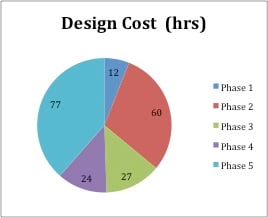No edit summary |
Jordanludtke (talk | contribs) |
||
| Line 89: | Line 89: | ||
{{How to | {{How to | ||
|title=How construct the "Stretchbarrow" | |title=How construct the "Stretchbarrow" | ||
|File: | |File:Stretcher1.jpg |Frame of Stretcher |1 |Build the frame using two 8' members and two 19'' members. Measure out and mark drill holes. Drill holes for the screws. | ||
|File:Stretcher3.JPG |Draping Cloth|2 |Drape cloth and fold slack in on the corners. | |||
||| | |File:Stretcher2.jpg |Drilling screws |3 |Drill in Screws in previously drilled holes. | ||
|File:Stretcher4.JPG |Staple edges |4 |Staple loose edges on under side of wood. | |||
|File:Stretcher5.JPG |Bracket |5 |Screw brackets. | |||
|File:Stretcher6.jpg |holes in axle |6 |Cut and Drill Holes in axel. | |||
|File:Stretcher7.jpg |Pinning in Wheel |7 |Pin down wheel. | |||
}} | }} | ||
Revision as of 22:35, 3 May 2012
Abstract
The Stretchbarrow is a device designed to carry beach grass. It was created for the Friends of the Dunes organization as a method of hauling invasive beach grass after it has been removed. The stretcher-wheelbarrow design was created by a group of students from Humboldt State University's Engineering 215 class.
Background
The goal of the Friends of the Dunes is to conserve the natural diversity of coastal environments. In order to effectively do this, volunteers systematically remove the invasive beach grass from the dunes in Arcata, CA. The Stretchbarrow was designed to transport the removed beach grass from the Humboldt Coastal Nature Center to awaiting vehicles for offsite disposal. The stretcher can be used by two or more people, or can be added to the separate wheel and axel to be used by one person.
Problem Statement and Criteria
Problem Statement The objective was to supply a means of transporting beach grass from the dunes to loading vehicles at the Humboldt County Nature Center. The volunteers using the device need a way of carrying large amounts of grass a short distance, and also a device that can be used by one person, if the need arose. Criteria The criteria were distinguished by our group in coordinance with the client in order to weigh different aspects of our alternative solutions to come up with the best solution possible.
| Criteria | Description | Weight |
|---|---|---|
| Dune Impact | Minimize impact on the dunes | 6 |
| Safety | How safe the user is | 8 |
| Cost | How much it costs to make and maintain the product | 4 |
| Ease of Use | How easy the product is for the user | 7 |
| Durability | How durable the product is | 5 |
| Maneuverability | How maneuverable the product is | 8 |
| Environmental Appropriateness | How environmentally appropriate the materials are | 4 |
Design Description
The stretchbarow design consists of a stretcher with long, wooden handles that can be carried by two or four people. These handles can also be attached to a separate axel with two wheels so that it can be used as a wheelbarrow as well for more convenient use by a single person.
The Stetcher
The stretcher is made of four pieces of oak 2 x 2’s, making a rectangle. A drop cloth is attached to the center of the rectangle to create an area for the beach grass. The dowels are held together by screws, and the drop cloth is attached to the wooden frame by screws as well. The cloth drops down in the middle by about a foot to maximize the volume.
Wheels and Axle
Two wheelbarrow wheels are attached to a metal axle to be added to the stretcher for use as a wheelbarrow. The wheels are six inches apart to spread out the load of the weight so that it will be easier to use on sand.
Axle Attachment
On one end of the stretcher, both handles have curved brackets on the bottom side for the ends of the metal axle to slide into. These are placed six inches in from the ends of the handles.
Attachment and Removal Instructions
To put the axle onto the stretcher, one end of the axle can be put into the bracket on one of the handles, slid back as far as possible, and then the other end of the axle can be placed into the bracket on the other handle. The pins are then placed into the holes on each end of the axle outside of the handles to prevent any sliding or shifting of the axle.
To remove the wheels and axle, remove the pins from the axle and push it all the way to one side. Take out one end, and then pull it the opposite way to completely remove it.
Costs
Design Time Input
The design cost accounts for the total time the group spent on the project outside of class. The combined times sum up to about 200 hours, most of which can be attributed to Phase 5 of the design process. The figure below shows the distribution of hours allocated to each phase.

Cost of Materials
The materials cost consists of the total cost of materials needed to create the project. The total amount was ___ as displayed in the table below. A few of the materials were donated, so a projections cost was added for reference.
Results
The stretcher was able to hold a large volume of beach grass, of approximately 50 pounds. In fact, the materials were so durable and design so strong, that it was found to steadily support an average size human being. When attached to the wheel and axel, the device did experience some inevitable resistance with the sand, but was ultimately functioning well.
Constuction Process Steps
Instructions how to build the design and keys on replicating it.